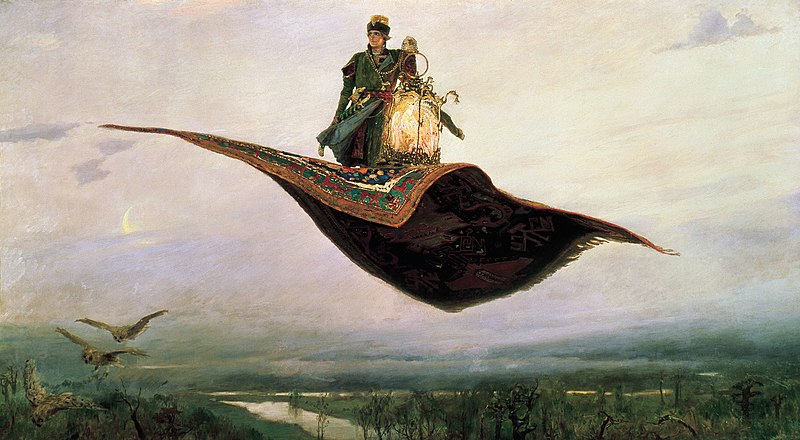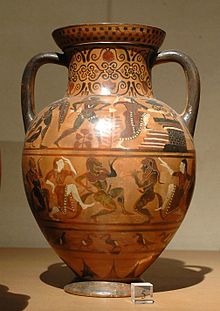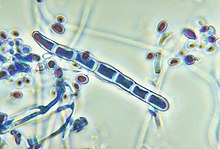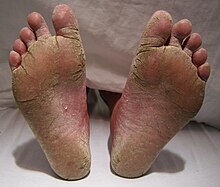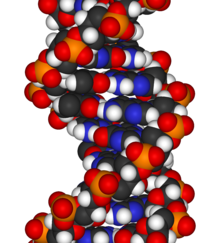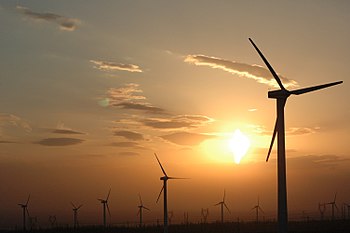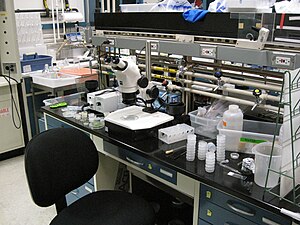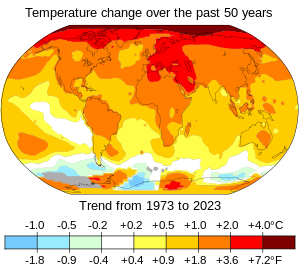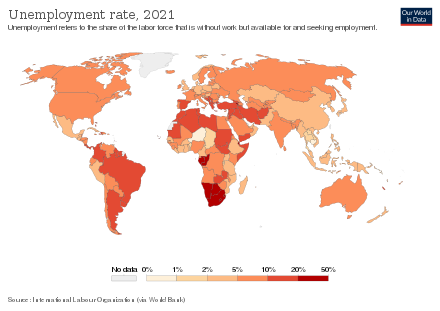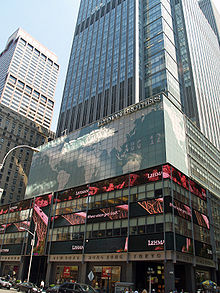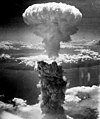- User page undergoing expansion/revamp. Please excuse the blank section until it is completed. Thank you.
Introduction
Hi. My name is The Transhumanist.
- As a transhumanist...
I love emerging and evolving technologies, and so...
I'm currently immersed in studying AI (particularly generative AI and reasoning engines), and big data.
I dabble in JavaScript, including writing user scripts from time to time.
My best user script so far, is SearchSuite...
SearchSuite provides further control over Wikipedia search results, such as on/off features to sort them, to present results one-per-line, and more. While it seems to work fairly well, there is definitely room for improvement. Comments and suggestions are welcome.
By the way, most of the scripts I've been working on are for building and augmenting outlines...
 | |
| Wikipedia ads | file info – #184 |
- As an encyclopedist...
I'm interested in all knowledge, especially how to organize it so you can find whatever is most relevant at any given moment.
I've been around Wikipedia since the Fall of 2005, and have been working mostly on Wikipedia's structure, and its knowledge navigation systems, throughout that time.
Selected articles that I've worked on
Selected emerging technologies and related articles
Selected global issues and related topics
Did you know...
- ... that the Māori believed that the failure of the rockets launched at a pā (fort) during the Battle of Puketutu was due to rites and rituals performed during its construction?
- ... that after significant modifications of the Tianzhou cargo spacecraft, Tianzhou 6 is the world's largest active cargo spacecraft by capacity?
- ... that foam has been used to kill farm animals en masse in a process called foam depopulation?
- ... that Jim Hobbins played two years of professional football, spaced apart by 11 years?
- ... that research suggests liminal spaces appear unsettling by falling in the uncanny valley of physical places?
- ... that Premana Premadi is the first Indonesian female astronomer to have an asteroid named in her honor?
- ... that the Skyrocket Galaxy has been described by NASA as looking like a "July 4th skyrocket"?
- ... that the metaverse has been described as "a honeypot trap for architecture astronauts"?
- ... that with a population of 1,500, Millstreet in County Cork, Ireland, became the smallest settlement to host the Eurovision Song Contest when it staged the 1993 event?
- ... that Malinau Kota, Indonesia, with 31 percent of the population of Malinau Regency, is home to more than 70 percent of its registered restaurants?
- ... that Fu Wuji's Fuhou gujin zhu includes information on a diverse range of topics, from astrological signs to the dimensions of imperial tombs?
- ... that the steps of Pohang Space Walk represent an ascent to an unreachable utopia?
- ... that 6 percent of the US population had symptoms of long COVID lasting three months or longer in the first half of 2023?
- ... that New Zealand's Big Lemon & Paeroa bottle was originally a replica space rocket?
Need help?
Do you have a question about any subject that you can't find the answer to?
Consider asking it at the Wikipedia reference desk.
Selected images that captured my attention
Trump news tracker
- 16 November 2024 – APEC Peru 2024
- At the Asia-Pacific Economic Cooperation summit in Peru, outgoing U.S. President Joe Biden meets with Chinese President Xi Jinping for their final meeting before Biden leaves office on January 20th. During the meeting, Biden and Xi talk about topics like cyber crime, trade, Taiwan, and Russia. Xi also said that his team will work with the incoming Trump administration. (Reuters)
- 15 November 2024 – Second presidential transition of Donald Trump
- President-elect of the United States Donald Trump names Karoline Leavitt as the White House Press Secretary for his second term in office, which will make her the youngest ever person to serve in the role at 27 years old. (AP)
- 13 November 2024 – 2024 United States presidential election
- Second presidential transition of Donald Trump
- Outgoing U.S. President Joe Biden meets with President-elect Donald Trump in the White House and pledges a peaceful transition of power. (Reuters)
- 8 November 2024 – Hurricane Milton
- A Federal Emergency Management Agency (FEMA) employee is fired for having told relief workers to not aid those who supported then-Republican candidate in the upcoming 2024 United States presidential election, Donald Trump. (CNN)
- 8 November 2024 – Security incidents involving Donald Trump, Iranian interference in the 2024 United States elections
- The U.S. Justice Department announces that they have formally charged an Afghan national who confessed to a murder-for-hire plan linked to the Islamic Revolutionary Guard Corps targeting president-elect Donald Trump. (CNN)
- 7 November 2024 – Second presidential transition of Donald Trump
- U.S. President-elect Donald Trump announces Susie Wiles as his White House Chief of Staff, the first woman to serve in this position. (ABC News)
- 6 November 2024 – Russian invasion of Ukraine
- U.S. President Joe Biden announces the expedited granting of more than US$6 billion in military aid to Ukraine prior to president-elect Donald Trump's inauguration in January. (Reuters)
- 6 November 2024 –
- The Institute of International Finance cautions that if U.S. president-elect Donald Trump follows through with the tariffs that he campaigned on, this will result in a renewal of inflation and higher U.S. banking loan interest rates. (CNBC)
- 6 November 2024 – Protests against Donald Trump
- Just Stop Oil protesters spray orange paint on the outside of the American Embassy in London, United Kingdom, following Donald Trump's re-election in the 2024 U.S. presidential election. (The Independent)
- U.S. protesters gather in San Jose, Berkeley, Chicago, Philadelphia, and New York City to protest following the re-election of Donald Trump. (Mercury News) (Newsweek)
- 6 November 2024 – 2024 U.S. elections
- 2024 U.S. presidential election, Second presidency of Donald Trump
Interests
Wikipedia newsfeed
- 24 November 2024 – Islamic State–Taliban conflict
- The Islamic State Khorasan claims responsibility for Saturday's mass shooting that killed ten Sufi worshippers at a shrine in Nahrin District, Baghlan, Afghanistan. (Arab News) (Barron's)
- 24 November 2024 – 2024 World Rally Championship
- In rally motorsport, Thierry Neuville of Hyundai wins the World Rally Drivers' Championship at Rally Japan, his first world title in the sport. (France 24)
- 23 November 2024 – Insurgency in Khyber Pakhtunkhwa, Sectarian violence in Pakistan
- 2024 Kurram massacre
- Clashes between Sunni and Shia fighters in Kurram District, Khyber Pakhtunkhwa, Pakistan, kill 33 people and injure 25 others. (AP)
- 23 November 2024 – Israel–Hezbollah conflict
- 2024 Israeli invasion of Lebanon
- At least 20 people are killed and 66 others are injured in an Israeli airstrike in Basta, Beirut, Lebanon. (L'Orient Today) (Reuters)
- Israeli airstrikes across Lebanon kill 18 people, including four children, in Shmustar, Roumieh, and Bodai. (AP)
- 2024 Tyre airstrikes
- Two people are killed and three others are injured in an Israeli drone strike on Tyre, Lebanon. The victims are Palestinian refugees from the nearby Rashidieh camp. (AP)
- 23 November 2024 – Sudanese civil war
- The Sudanese Armed Forces recapture Sinja, the capital of Sennar State, Sudan, from the Rapid Support Forces. (The New Arab)
- 23 November 2024 – 2024 United Nations Climate Change Conference
- World leaders at the COP29 climate summit in Baku, Azerbaijan, sign a deal to send at least $300 billion annually to developing nations in the fight against climate change. (CBS News)
- 23 November 2024 – Russia–United States relations
- The United States Intelligence Community declassifies a document which accuses Russia of assassinating political opponents to President Vladimir Putin abroad. (Kyiv Independent) (Bloomberg)
- 23 November 2024 – Constitutional crisis in Somalia
- 2024 Jubaland presidential election
- At least one security officer is killed and two others are injured in a gunfight between Jubaland police and security guards in Kismayo, Somalia, after rival candidates announced a parallel election amid a disagreement on the electoral procedure for the presidential election on Monday. (Hiiraan Online) (NTV Kenya) (NATION)
- 23 November 2024 – Presidency of Bongbong Marcos
- The Philippine Vice President Sara Duterte claims to have spoken with a contract killer to target president Bongbong Marcos, his wife Liza and House Speaker Martin Romualdez in the event of her assassination, which the administration deemed an "active threat" against the government. (ABS-CBN)
- 23 November 2024 – 2024 U Sports football season
- 59th Vanier Cup
- In Canadian football, the Laval Rouge et Or defeats the Wilfrid Laurier Golden Hawks 22–17 in the 59th Vanier Cup, claiming their 12th U Sports football title. (TSN)
- 22 November 2024 – Israel–Hezbollah conflict
- 2024 Beqaa Valley airstrikes
- An Israeli airstrike targeting the Dar El Amal Hospital in Duris in the Bekaa Valley, Lebanon, kills the hospital director and six other health workers. (Anadolu Agency) (Al Jazeera)
- 2024 Israeli invasion of Lebanon
- At least five medics are killed when Israeli airstrikes hit a multistorey building in Chyah, Beirut, Lebanon. (Al Jazeera)
- 22 November 2024 – Russian invasion of Ukraine
- 2024 Kursk offensive
- Russian human rights commissioner Tatyana Moskalkova states that 46 of one thousand Russian civilians who claimed to have been forcibly relocated by Ukraine into its territory have been returned, following extensive negotiations involving the Red Cross. (Reuters)
- Two people are killed and 12 others are injured in a Russian drone attack on civilian infrastructure in Sumy, Ukraine. (Reuters)
- 22 November 2024 – Insurgency in Khyber Pakhtunkhwa, Sectarian violence in Pakistan
- 2024 Kurram massacre
- Large crowds of protesters gather in Parachinar, Pakistan, to protest the massacre of 50 Shiite Pakistanis as well as the ongoing sectarian violence in the region. (Reuters) (MENAFN)
- 22 November 2024 – Mali War
- Jama'at Nasr al-Islam wal-Muslimin claims responsibility for an attack in Mali the previous day which killed seven Wagner Group mercenaries. (Reuters)
- 22 November 2024 – German economic crisis
- German automotive supplier Bosch announces plans to lay off 5,550 employees, including 3,500 by 2027, as part of measures to reduce costs. (DW) (Reuters)
- 22 November 2024 – 2024 Laos methanol poisoning
- A second Australian tourist dies of alcohol poisoning in Vang Vieng, Laos, bringing the death toll from the incident to six. Eight others remain hospitalized. (ABC News Australia)
- 22 November 2024 –
- An infant dies and at least ten other people fall ill in a listeria outbreak related to ready-to-eat meat and poultry products in California, United States. (AP)
- 22 November 2024 – Conscription of yeshiva students
- The Israel Defense Forces issue more than 1,000 arrest warrants to ultra-Orthodox Jews in Israel for evading draft orders. (CNN) (The Times of Israel)
- 22 November 2024 – Norway–United States relations
- A Norwegian man working as a guard at the United States Embassy in Oslo is arrested, on suspicion of spying for Russia and Iran. (CNN)
- 22 November 2024 –
- Energy company Phillips 66 is indicted in a United States federal court on six charges of violating the Clean Water Act in Los Angeles County, California. (CBS News)
- 22 November 2024 – 2024 Senegalese parliamentary election
- The National Autonomous Electoral Commission of Senegal certifies the results of the parliamentary election, with the ruling PASTEF party winning 130 out of 165 seats. (RFI) (Al Jazeera)
- 22 November 2024 –
- Nicaraguan lawmakers vote unanimously to approve a constitutional amendment that strengthens the political power of President Daniel Ortega and makes his wife and Vice President Rosario Murillo "co-president". (Confidencial) (Al Jazeera)
- 22 November 2024 – Censorship in Belarus
- In a speech at Minsk State Linguistic University, Belarusian President Alexander Lukashenko threatens to shut down the Internet in his country if there are mass protests before the upcoming presidential election after the previous election saw mass protests. (Rferl)
- 22 November 2024 –
- Instagram CEO Adam Mosseri announces that Meta Platforms social network Threads will test AI-powered summaries for trending topics. (TechCrunch)
- 21 November 2024 – Russian invasion of Ukraine
- Dnipro strikes, Russian strikes against Ukrainian infrastructure
- Russia strikes Dnipro, Ukraine, with a projectile stated by Russian President Vladimir Putin to be a new Oreshnik intermediate-range ballistic missile (IRBM) model. This confirms earlier reports from the United States and other western officials, who said that Russia had used an IRBM after initial reports misidentified the missile as a RS-26 Rubezh intercontinental ballistic missile. (Reuters) (CBS News) (BBC News)
- Hungary and the Russian invasion of Ukraine
- Hungary announces the deployment of a missile defense system on its border with Ukraine, saying that the threat of escalation with Russia is now "greater than ever". (Reuters)
- United Kingdom and the Russian invasion of Ukraine
- Russian ambassador to the United Kingdom Andrey Kelin says that the UK is now "directly involved" in the war in Ukraine following yesterday's use of British Storm Shadow cruise missiles by Ukraine to strike targets inside Russia. (Sky News)
- 21 November 2024 – Insurgency in Khyber Pakhtunkhwa, Sectarian violence in Pakistan
- 2024 Kurram massacre
- At least 42 people are killed and many others are wounded as gunmen open fire against two convoys carrying Shia people in Kurram District, Khyber Pakhtunkhwa, Pakistan. (Al Jazeera)
- 21 November 2024 – Israel–Hezbollah conflict
- Hezbollah fires a rocket barrage at northern Israel, killing one person in the city of Nahariya. (Reuters)
- 21 November 2024 – 2024 Laos methanol poisoning
- An Australian and a British tourist die after consuming poisoned alcohol in Vang Vieng, Laos, bringing the death toll from the incident to five. Nine others are hospitalized. (BBC News) (AP)
- 21 November 2024 –
- The Ministry of Health of New Zealand declares a national epidemic of whooping cough after a recent spike of 263 cases in the past four weeks. (RNZ)
- 21 November 2024 – International sanctions during the Russian invasion of Ukraine, Russia–United States relations
- U.S. Treasury Secretary Janet Yellen announces that the Treasury Department has imposed sanctions against Russia's third-largest bank Gazprombank and its subsidiaries. (The Hill)
- 21 November 2024 – 2022 Brazilian coup plot
- Brazilian Federal Police indicts former President Jair Bolsonaro and 36 others for attempting a coup after he lost to Lula da Silva in the 2022 election. (AP)
- 21 November 2024 – Novi Sad railway station canopy collapse
- Eleven people, including former construction minister Goran Vesić, are arrested as part of an investigation into the Novi Sad railway station accident that caused 15 deaths earlier this month. (DW) (AL24)
- 21 November 2024 – War crimes in the Israel–Hamas war, International Criminal Court investigation in Palestine
- The International Criminal Court issues arrest warrants for Israeli Prime Minister Benjamin Netanyahu, former Israeli minister of defense Yoav Gallant, and the leader of Hamas' military wing Mohammed Deif, who is presumed to be dead. (Jerusalem Post)
- 21 November 2024 – Internet censorship in Pakistan
- It is reported that Pakistan internet authorities have banned the use of Bluesky in the country amidst a surge in popularity in the app. The ban is confirmed by internet watchdog NetBlocks in a post on X (formerly known as Twitter). (TechRadar)
- 21 November 2024 –
- The European Southern Observatory announces that its astronomers in Chile capture the first close-up image of a star outside the Milky Way. (The New York Times)
- 20 November 2024 – Israel–Hamas war
- Calls for a ceasefire during the Israel–Hamas war
- The United States vetoes a United Nations Security Council proposal for a ceasefire in Gaza, citing the proposal's not linking the ceasefire to the return of hostages taken during the conflict. (The New York Sun) (Reuters)
- United States support for Israel in the Israel–Hamas war
- The United States Senate rejects three resolutions by senator Bernie Sanders that would block the sale of weapons to Israel in their war in Gaza. (The Hill)
- 20 November 2024 – Russian invasion of Ukraine
- United Kingdom and the Russian invasion of Ukraine
- British-produced Storm Shadow cruise missiles are launched into Russian territory by Ukraine for the first time, following approval by the Starmer cabinet. (The Guardian)
- The U.S., Italian, Greek, and Spanish governments temporarily close their embassies in Kyiv, Ukraine, following threats of a "significant air attack" from Russia. (The Washington Times)
- The embassies of Kazakhstan and Kyrgyzstan urge their citizens to leave areas near Ukrainian combat zones or to leave Ukraine altogether amid an escalating risk of Russian retaliatory attacks. (The Times of Central Asia)
- 20 November 2024 – Mali War
- Fall of Timbuktu
- The International Criminal Court sentences Malian Islamist militant and Ansar Dine member al-Hassan Ag Abdoul Aziz to 10 years in prison on charges of war crimes and crimes against humanity committed in 2012 and 2013 in Timbuktu, Mali. (Al Jazeera)
- 20 November 2024 – Sudanese civil war
- Battle of Khartoum
- The Sudanese Armed Forces intensify their offensive in the Khartoum capital region, particularly in Khartoum North where the battle has rapidly escalated. (Sudan Tribune)
- 20 November 2024 – Syrian civil war
- Israel's role in the Syrian civil war
- Thirty-six people are killed and more than 50 others are injured in Israeli airstrikes in Palmyra, Syria. (Reuters)
- 20 November 2024 – German economic crisis
- American automaker Ford announces that it will cut 4,000 jobs in Europe, including 2,900 in Germany, citing economic instability and conflicts with environmental regulations. (Newsweek)
- 20 November 2024 – November 2024 Northeast Pacific bomb cyclone
- Two people are killed and more than 570,000 people are without power when a bomb cyclone makes landfall over the West Coast of the United States and British Columbia, Canada. (CNN) (NBC News)
- 20 November 2024 – 2024 Baltic Sea submarine cable disruptions
- The Russian government denies accusations made by European governments of their involvement in sabotaging two submarine telecommunications cables in the Baltic Sea as a means of hybrid warfare. (DW)
- The Royal Danish Navy boards the Chinese cargo ship Yi Peng 3 in the Baltic Sea after the ship is suspected to be involved in the sabotage of the submarine cables. (EurAsia Daily)
- 20 November 2024 – Capital punishment in Indonesia
- Philippine President Bongbong Marcos confirms the return of Mary Jane Veloso to the Philippines following 14 years on death row in Indonesia, after the Indonesian government implemented a policy for the repatriation of foreign prisoners. (South China Morning Post)
- 20 November 2024 –
- Indian billionaire and Adani Group chairman Gautam Adani is indicted in the U.S. for his role in an alleged multi-billion dollar bribery and fraud scheme where he and seven others paid Indian government officials US$265 million to obtain contracts for Adani Green Energy. (AsiaOne) (Bloomberg)
- New Zealand designates Yemen's Houthi movement and Lebanon's Hezbollah as terrorist groups. (The Times of Israel)
- 20 November 2024 – 2024 United Kingdom farmers' protests
- Deputy Prime Minister Angela Rayner dismisses concerns brought on by protests in London from United Kingdom farmers against new agricultural inheritance taxation policies as "scaremongering". (Sky News)
- 20 November 2024 – Mali War
- Malian junta chief Assimi Goïta dismisses Prime Minister Choguel Kokalla Maïga for criticizing the junta government's decision to indefinitely postpone a return to civilian rule. (DW)
- 20 November 2024 – Protests against the Russian invasion of Ukraine
- Around 1,671 anti-war protesters in Belarus are arrested for showing solidarity with Ukraine as part of a crackdown on opposition under President Alexander Lukashenko. (AP)
- 20 November 2024 –
- Iraq imposes a two-day nationwide curfew as it conducts its first national census since 1987. (Al Jazeera)
- 20 November 2024 – Discoveries of exoplanets
- In a study published by the Nature journal, astronomers announce the discovery of IRAS 04125+2902 b, a newborn exoplanet. The discovery was made by Madyson Barber, a graduate student at the University of North Carolina at Chapel Hill. (Nature) (ABC News)
- 19 November 2024 – Russian invasion of Ukraine
- Military aid to Ukraine during the Russo-Ukrainian War
- United States and the Russian invasion of Ukraine
- U.S. President Joe Biden approves of sending non-persistent anti-personnel mines to Ukraine, with Ukraine committing to not use them in areas with civilians. (Al Jazeera)
- The United Kingdom and France both prepare new military packages containing long-range missiles to send to Ukraine following President Biden's decision to allow deep strikes into Russian territory using American weapons. (Newsweek)
- Attacks in Russia during the Russian invasion of Ukraine
- Ukraine launches ATACMS ballistic missiles at targets in Bryansk Oblast, Russia, according to the Russian Defence Ministry. It is the first time that Ukraine has used the American-supplied missiles to strike targets inside Russia. (BBC News)
- Nuclear risk during the Russian invasion of Ukraine, Russia and weapons of mass destruction
- Russian President Vladimir Putin signs a decree that allows Russia to use nuclear weapons in response to conventional attacks by a non-nuclear state supported by a nuclear power. (Reuters)
- 19 November 2024 – Israel–Hezbollah conflict
- 2024 Israeli invasion of Lebanon
- Three Lebanese soldiers are killed and 17 other people are injured in an Israeli airstrike in Sarafand, Lebanon. (Al Jazeera) (Times of Israel)
- 19 November 2024 – Haitian crisis
- Twenty-eight suspected gang members are killed by police and residents in Pétion-Ville, Port-au-Prince, Haiti. (Al Jazeera) (The Jamaica Observer)
- Doctors Without Borders announces it will suspend operations in Port-au-Prince indefinitely following rape and death threats from Haitian police. (DW)
- 19 November 2024 – Insurgency in Khyber Pakhtunkhwa
- Twelve soldiers are killed and others are wounded after a suicide car bombing targeting a security post in Bannu, Khyber Pakhtunkhwa, Pakistan. Six Hafiz Gul Bahadur Group gunmen are killed in the ensuing shootout. (AP)
- 19 November 2024 – 2024 Boeing machinists strike
- American aerospace company Boeing announces it will layoff 17,000 workers by the end of 2024, 10% of its global workforce, due to financial difficulties following the machinists strike. (Assembly Magazine) (WAFB9)
- 19 November 2024 – 2024 G20 Rio de Janeiro summit
- South Africa becomes the first country from Africa to chair the G20 after receiving the leadership position during the second day of the summit in Rio de Janeiro, Brazil. (Tempo)
- 19 November 2024 – 2020 Hong Kong pro-democracy primaries, Hong Kong 47
- Forty-five pro-democracy activists in Hong Kong are sentenced to prison terms of between four and 10 years over an unofficial primary held in 2020. (Reuters)
- 19 November 2024 – 2022–2023 Brazilian election protests
- Brazilian Federal Police arrest five people, including four G20 security guards, for their alleged involvement in a plot to assassinate President Lula da Silva and Vice President Geraldo Alckmin following the general election in 2022. (Al Jazeera)
- 19 November 2024 –
- The Tunisian coast guard announces that on the night of November 8, a patrol boat rammed and sank a boat carrying migrants on its coasts, killing 53 people. (Fanpage)
- 19 November 2024 – 2023–2024 Georgian protests
- Georgian police reportedly break up tent camps while beating and detaining protesters in Tbilisi, Georgia, demonstrating against the allegedly rigged parliamentary election in October. (DW)
- 19 November 2024 – 2024 Abkhazian protests
- Abkhazian President Aslan Bzhania resigns following negotiations with the opposition and is succeeded by Vice President Badra Gunba as acting president. (Abkhaz World) (Reuters)
- 19 November 2024 – 2024 United Kingdom farmers' protests
- Thousands of British farmers protest at the Houses of Parliament in London, United Kingdom, against a new inheritance tax on land ownership that includes farms. (Al Jazeera) (BBC News)
- 19 November 2024 – 2024 Venezuelan presidential election, United States–Venezuela relations
- The United States announces it recognizes Venezuelan opposition leader Edmundo González as the President-elect following the presidential election in July. (Al Jazeera)
- 19 November 2024 – Hīkoi mō te Tiriti
- Over 40,000 people gather in front of the New Zealand Parliament House in Wellington to protest against the Treaty Principles Bill that would change Māori people's rights, making it one of the largest protests in the country. (DW)
- 19 November 2024 –
- SpaceX launches their sixth Starship rocket at the Boca Chica launch pad in Brownsville, Texas, U.S. (Reuters)
- 18 November 2024 – Russian invasion of Ukraine
- Russian strikes against Ukrainian infrastructure
- Odesa strikes
- Russian forces launch a missile attack on the city of Odesa, Ukraine, for the second consecutive day, killing at least ten civilians, injuring dozens of others and damaging civilian infrastructure, including residential buildings. (Ukrainska Pravda)
- Ukrainian energy crisis, 17 November 2024 Russian strikes on Ukraine
- Ukraine re-implements nationwide rolling blackouts primarily due to yesterday's destruction of energy infrastructure by Russian airstrikes. (Reuters)
- 18 November 2024 – Israel–Hezbollah conflict
- 2024 Israeli invasion of Lebanon
- Hezbollah launches more than 100 missiles at Israel, including Tel Aviv, killing one person and injuring dozens of others. (The Times of Israel)
- Five people are killed and 24 others are injured in an Israeli airstrike on Zuqaq al-Blat, Beirut, Lebanon. (Al Jazeera)
- Hezbollah and Lebanon both agree to a United States proposal for a ceasefire. However, Israel has refused to comment. (Reuters)
- 18 November 2024 – Insurgency in Khyber Pakhtunkhwa
- Security forces raid a Lashkar-e-Islam hideout in the Tirah Valley of Khyber Pakhtunkhwa, Pakistan, killing ten militants and injuring several others. (ABC News)
- A Pakistani Taliban ambush on a military convoy in Khyber district, Khyber Pakhtunkhwa, kills eight soldiers and wounds three others. Several gunmen are also killed. Separately, seven police officers are kidnapped in Bannu. (Voice of America)
- 18 November 2024 – Somali Civil War
- Three people are killed and another is injured when a land mine, believed to have been planted by Al-Shabaab, explodes on a highway between Afgooye and Wanlaweyn in Lower Shabelle, Somalia. (Garowe Online)
- 18 November 2024 –
- Twenty gang members are killed by security forces in the Gaza Strip after armed looters hijacked almost 100 trucks bringing aid for the ongoing famine. (The Guardian)
- American airline Spirit Airlines files for Chapter 11 bankruptcy after years of financial losses and a failed merger attempt with JetBlue. (NPR)
- Three people are killed in an explosion at a fireworks factory in Ercolano, Italy. (Rai News)
- 18 November 2024 – Denmark–Somalia relations
- Denmark and Somalia reach an agreement to relieve more than $8.5 million of Somali debt. (Horseed Media)
- 18 November 2024 – 2024 Baltic Sea submarine cable disruptions
- The C-Lion1 submarine communications cable across the Baltic Sea between Finland and Germany is damaged in what German officials suspect is sabotage. (The Guardian)
- 18 November 2024 –
- Three people are killed in a stabbing spree in Manhattan, New York, United States. The perpetrator is arrested. (CNN)
- 17 November 2024 – Russian invasion of Ukraine
- Russian strikes against Ukrainian infrastructure, Ukrainian energy crisis
- 17 November 2024 Russian strikes on Ukraine
- Russia launches its largest aerial attack on Ukraine in months. According to President of Ukraine Volodymyr Zelenskyy, around 120 missiles and 90 drones were launched, damaging energy infrastructure across the country, killing at least seven people, and causing widespread damage. (CNN) (BBC News)
- Ten people are killed and 52 others are injured in a Russian missile strike on an apartment building in Sumy, Ukraine. (Reuters)
- United States President Joe Biden lifts restrictions on the Ukrainian use of U.S. weapons for deep attacks inside Russia, with Ukrainian forces planning to use the weapons in long-distance attacks in the coming days. (Reuters)
- 17 November 2024 – Israel–Hamas war
- Palestinian genocide accusation
- Pope Francis calls for the global community to investigate whether Israel is committing genocide in Gaza. (CNN)
- Siege of North Gaza
- At least 72 people are killed, a third of whom are children, in an Israeli strike against a residential building in Beit Lahia, in northern Gaza. (Al Jazeera) (AsiaOne)
- 17 November 2024 – Israel–Hezbollah conflict
- 2024 Israeli invasion of Lebanon
- An Israeli airstrike on the Lebanese Ba'ath Party headquarters in Ras el-Nabaa, Beirut, Lebanon, kills seven people, including Hezbollah spokesman Mohammed Afif. Sixteen others are wounded. Three people are also killed and 29 more injured in another airstrike in Mar Elias. (Barron's) (Al Jazeera)
- 17 November 2024 – 2024 Atlantic hurricane season
- Tropical Storm Sara makes landfall in Belize after causing flooding in Honduras. (AP)
- 17 November 2024 – 2024 Pacific typhoon season
- Typhoon Man-yi makes landfall in the Philippines as a Category 4 super typhoon, three days after Typhoon Usagi struck the country and becoming the sixth consecutive storm to affect Luzon in the past month. At least eight people are killed. (Al Jazeera) (BBC News)
- 17 November 2024 –
- One fatality and dozens of illnesses are linked to an E. coli outbreak of U.S.-grown organic carrots. (CTV News)
- Two people are killed and nine others are injured in two shooting incidents near a parade route in New Orleans, Louisiana, United States. (AP)
- 17 November 2024 – 2024 Senegalese parliamentary election
- Citizens of Senegal vote for the 165 seats of the National Assembly after President Bassirou Diomaye Faye dissolved the parliament in September. (DW)
- 17 November 2024 –
- Hundreds of people march in a protest against Russian President Vladimir Putin in Berlin, Germany, which was called by opposition leaders-in-exile Yulia Navalnaya, Vladimir Kara-Murza, and Ilya Yashin. (DW)
- 17 November 2024 – 111th Grey Cup
- In Canadian football, the Toronto Argonauts defeat the Winnipeg Blue Bombers 41–24 to claim their 19th Canadian Football League title. (TSN)
- Toronto Argonauts quarterback Nick Arbuckle is named the most valuable player and wide receiver Dejon Brissett is named the most valuable Canadian. (TSN)
- 17 November 2024 – 2024 ATP Finals
- In tennis, Jannik Sinner defeats Taylor Fritz, 6–4, 6–4 to win his first ATP Finals singles title. (CNN)
- 17 November 2024 – 2024 MotoGP World Championship
- In motorcycle racing, Prima Pramac Racing driver Jorge Martín wins the 2024 MotoGP World Championship, becoming the first independent driver to win the title in the MotoGP era. (Al Jazeera)
- 16 November 2024 – Insurgency in Balochistan
- Seven paramilitary soldiers are killed and 18 are wounded by a Balochistan Liberation Army attack on a checkpoint in Kalat District, Balochistan, Pakistan. (Reuters)
- 16 November 2024 – Miss Universe 2024
- Danish model Victoria Kjær Theilvig is crowned Miss Universe, becoming the first Dane to win the competition. (CNN) (AP)
- 16 November 2024 – 2023–2024 mpox epidemic
- California confirms its first case of Clade I mpox in a person who travelled to East Africa, becoming the first confirmed case of Clade I mpox in the United States. (Reuters)
- 16 November 2024 –
- At least 13 people are killed and 80 rescued after a building collapses in Dar es Salaam, Tanzania. (Reuters)
- 16 November 2024 – APEC Peru 2024
- At the Asia-Pacific Economic Cooperation summit in Peru, outgoing U.S. President Joe Biden meets with Chinese President Xi Jinping for their final meeting before Biden leaves office on January 20th. During the meeting, Biden and Xi talk about topics like cyber crime, trade, Taiwan, and Russia. Xi also said that his team will work with the incoming Trump administration. (Reuters)
- 16 November 2024 – 2024 Wuxi stabbing attack
- Eight people are killed and 17 others are injured in a stabbing spree at the Wuxi Institute of Technology in Yixing, Jiangsu, China. The suspect, a 21-year-old student, is arrested. (CNN) (Reuters)
- 16 November 2024 –
- A man barricades himself inside his father's restaurant in Issy-les-Moulineaux, France, taking restaurant employees as hostages. The hostages are later rescued and the man is arrested. (BFM TV) (The Jerusalem Post)
- Argentina orders the arrest of 61 Brazilian citizens currently living in Argentina who are accused of participating in the 2023 Brazilian Congress attack. (Reuters)
- 16 November 2024 – 2024 Gabonese constitutional referendum
- Citizens of Gabon vote on a proposed new constitution, including replacing the current semi-presidential system with a presidential system following the 2023 coup. (DW)
- 15 November 2024 – Colombian conflict
- Thirteen National Liberation Army militants and a police lieutenant were killed during a serie of shootouts with soldiers and police officers in Bolívar and Arauca, Colombia. Other twelve militants were arrested during the operations.(El Publico Tv)
- 15 November 2024 – Allied Democratic Forces insurgency, Kivu conflict
- Thirteen people are killed, others are kidnapped and houses are burned by Allied Democratic Forces gunmen in Mabisu, North Kivu, Democratic Republic of the Congo. (AP)
- 15 November 2024 –
- The Canadian Union of Postal Workers go on strike after failing to renegotiate their contract with Canada Post. (AP)
- The purchase of conspiracy theory website InfoWars to the satirical news content maker The Onion is put on hold by a Texas judge after lawyers representing InfoWars founder Alex Jones claimed to find irregularities in the auctioning process. The Onion say they plan to complete their purchase. (The Guardian)
- At least ten people are killed in a fire at a retirement residence in Villafranca de Ebro, Zaragoza, Spain. (The Washington Post)
- Ten infants are killed and 16 others are injured in a fire inside a neonatal intensive care unit at the Jhansi
- Mike Tyson loses to Jake Paul in the so called "scripted boxing game" as Jake Paul wins by unanimous decision
- 15 November 2024 – Austria–Russia relations
- Austrian energy company OMV announces, that Russian state-owned energy company Gazprom will stop supplying natural gas to Austria, who receives their natural gas primarily from Russia, starting this weekend. (DW)
- 15 November 2024 – Russian invasion of Ukraine, Germany–Russia relations
- German Chancellor Olaf Scholz holds a telephone call with Russian President Vladimir Putin about the war in Ukraine, their first contact since 2022. Putin tells Scholz that any negotiated settlement to end the war must recognize the territories that Russia has occupied as part of Russia and that Ukraine must abandon its aspiration to join NATO. (AP) (The New York Times)
- 15 November 2024 – 2024 Abkhazian protests
- Protestors storm the Parliament of Abkhazia in the capital Sukhumi in opposition to a proposed measure that would allow Russians to buy property in Abkhazia. Opposition leader Eshsou Kakalia claims that protestors now control the building. (Al Jazeera)
- 15 November 2024 – Assassination of Malcolm X
- Three daughters of civil rights activist Malcolm X file a $100 million wrongful death lawsuit against the CIA, the FBI, and the New York Police Department for their alleged roles in the assassination of Malcolm X. (AP)
- 15 November 2024 – Israel–Hamas war protests
- American ice cream company Ben & Jerry's sues their parent company Unilever in a federal court for allegedly censoring their statements supporting Gaza. (AP) (Business Insider)
- 15 November 2024 – 2024 Sri Lankan parliamentary election
- Sri Lankan President Anura Kumara Dissanayake's National People's Power coalition wins a supermajority in the snap election for the 17th Parliament of Sri Lanka. (Reuters)
- 15 November 2024 – Second presidential transition of Donald Trump
- President-elect of the United States Donald Trump names Karoline Leavitt as the White House Press Secretary for his second term in office, which will make her the youngest ever person to serve in the role at 27 years old. (AP)
- 15 November 2024 –
- Kyrgyzstan President Sadyr Japarov opens the Zhany-Barak village in the Osh Region of Kyrgyzstan for resettled residents of the Barak exclave in Uzbekistan. (24.kg)
- Croatian Prime Minister Andrej Plenković dismisses health minister Vili Beroš on suspicions of corruption. (DW)
- 14 November 2024 – Israel–Hezbollah conflict
- 2024 Israeli invasion of Lebanon
- 2024 Beqaa Valley airstrikes
- Fifteen rescue workers are killed during an Israeli airstrike on the Regional Civil Defense Centre's headquarters in Baalbek, Lebanon. (BBC News)
- 14 November 2024 – Russian invasion of Ukraine
- Eastern Ukraine campaign
- The Russian Defence Ministry claims that Russian forces have captured the village of Voznesenka in Donetsk Oblast, Ukraine. (Anadolu Agency)
- Odesa strikes, Russian strikes against Ukrainian infrastructure
- One person is killed and ten others are injured in Russian airstrikes on an apartment building and energy facilities in Odesa, Ukraine. (Reuters)
- 14 November 2024 – Syrian civil war
- Israel's role in the Syrian civil war
- Sixteen people are killed and 15 others are injured in Israeli airstrikes against residential buildings in Damascus, Syria. The Palestinian Islamic Jihad announces that a number of its militants are among the fatalities. (Al Mayadeen) (Al Jazeera)
- 14 November 2024 – Insurgency in Balochistan
- In Balochistan, Pakistan, two soldiers and three insurgents are killed during a raid in Harnai District. Separately, two civilians are killed and three injured after an explosion in Ziarat District. (TRT World)
- 14 November 2024 – Insurgency in Khyber Pakhtunkhwa
- A Pakistani Taliban commander accidentaly detonates a car bomb at his house in Mir Ali, Khyber Pakhtunkhwa, Pakistan, killing himself and six other people. Fourteen others are also wounded. (AP)
- 14 November 2024 – Haitian crisis
- Doctors Without Borders reports that at least two patients are dead after police officers and vigilantes attacked ambulances in Port-au-Prince, Haiti. (Semafor) (CNN)
- 14 November 2024 – 25th Annual Latin Grammy Awards
- Dominican singer Juan Luis Guerra is the biggest winner with four awards. (Billboard)
- 14 November 2024 –
- It is announced that the Kingda Ka roller coaster, the world's tallest roller coaster, will be retired at the Six Flags Great Adventure amusement park in New Jersey, United States. (KYW-TV)
- The Onion, an American media company known for its satirical news content, acquires InfoWars, with the intent of rebranding the site into a parody of itself. (The New York Times)
- 14 November 2024 – 2024 Pacific typhoon season
- More than 24,000 people are evacuated as Typhoon Usagi makes landfall in Baggao, Cagayan, Philippines. (DW)
- 14 November 2024 –
- A study published in the medical journal The Lancet reports that the number of adults who have diabetes globally has increased from 200 million people in 1990 to around 800 million people in 2022. The study also reported that around 40% of adults with diabetes are not receiving treatment for the disease. (DW) (The Guardian)
- 14 November 2024 – 2024 Sri Lankan parliamentary election
- Sri Lankans vote in a snap election for the 225 members of the 17th Parliament of Sri Lanka. (Morning Star) (DW)
- 14 November 2024 –
- Nauru launches an investment initiative which offers Nauruan citizenship in exchange for investment in climate change mitigation. (RNZ)
- 13 November 2024 – Israel–Hezbollah conflict
- 2024 Israeli invasion of Lebanon
- Six Israeli soldiers from the Golani Brigade are killed in a three-hour gun battle with Hezbollah militants in southern Lebanon. (Le Monde)
- 13 November 2024 – Insurgency in Khyber Pakhtunkhwa, Insurgency in Balochistan
- Twelve Pakistani Taliban gunmen are killed and six wounded in two separated shootouts with soldiers in the districts of Kech and North Waziristan. (AP)
- 13 November 2024 – United Kingdom cost-of-living crisis
- British DIY retailer Homebase collapses into administration, threatening up to 2,000 jobs. (BBC News)
- 13 November 2024 – 2024 Indo-Pakistani smog
- New Delhi, India, reports its 15th consecutive day with a "very poor" recorded air quality index due to significant air pollution causing zero meter visibility smog. (The Hindu)
- 13 November 2024 – 2024 Spanish floods
- Thousands of Spaniards living near river banks are evacuated following the issuing of AEMET's maximum weather alert in the Province of Málaga, Costa del Sol, and the Valencian Community caused by a new cold drop system. (The Independent)
- 13 November 2024 – Israel–Turkey relations
- Turkish President Recep Tayyip Erdoğan announces that Turkey has suspended all diplomatic relations with and will not develop any further relations with Israel. However, the Turkish embassy in Tel Aviv, Israel, will continue to operate. Israel's foreign ministry denies any change in its diplomatic relationship with Turkey. (JNS) (Newsweek) (Middle East Eye)
- 13 November 2024 – 2024 Brasília attack
- Two explosions occurs near the Supreme Federal Court building and the Praça dos Três Poderes in Brasília, Brazil. The perpetrator dies by suicide bombing, being the only fatality. The Federal Police announces an investigation into the explosions, while the Attorney General's Office calls the situation "an attack against the Supreme Federal Court and the Chamber of Deputies". (G1) (CNN)
- 13 November 2024 – Bulldozer Justice
- The Supreme Court of India rules that it is unconstitutional for the government to demolish property belonging to people suspected of crimes without a legal process, a practice common in states ruled by the Bharatiya Janata Party. (The Times of India) (DW)
- 13 November 2024 – International Criminal Court investigation in the Philippines, Philippine drug war
- The Philippines says it is bound help the International Criminal Court if the international court seek custody of former President Rodrigo Duterte through Interpol over alleged crimes against humanity committed during the Philippine drug war. (AP)
- 13 November 2024 – 2024 United States presidential election
- Second presidential transition of Donald Trump
- Outgoing U.S. President Joe Biden meets with President-elect Donald Trump in the White House and pledges a peaceful transition of power. (Reuters)
- 13 November 2024 – 2024 Somaliland presidential election
- Citizens of Somaliland vote for the President between incumbent Muse Bihi Abdi of the Kulmiye party, House of Representatives speaker Abdirahman Mohamed Abdullahi of the Waddani party, and Faysal Ali Warabe of the Justice and Welfare Party. (VOA) (DW)
Me (incomplete), described in userboxes...
|
History and contributions...
Awards and praise I've received over the years...
Tip of the day April 21, 2006: Thanks for helping a newbie!

I just want to thank you for building on my tip and making it a true wikipedia tip of the day. I'm still learning a lot about how to do things around here, so your help was greatly appreciated! Keep up the great work, and keep on Going for it!
Smashing!

Barnstar

Barnstar

Award

|
The Random Acts of Kindness Barnstar | |
| Your kindess was not random, because you were kind enough to listen to my requests to fix my userpage. Your major kindness will not be ignored, as this BarnStar is my token of appreciation! Kyo catmeow! 01:59, 24 November 2006 (UTC) |
!!!
<O.o --The Prophet Wizard of the Crayon Cake 01:45, 27 November 2006 (UTC)
- You're welcome. The Transhumanist 01:55, 27 November 2006 (UTC)
Barnstar

|
The da Vinci Barnstar | |
| Awarded to User:The Transhumanist. Sometimes those who take on large areas of wikipedia organisation seem to be taken for granted, and this is just to show that your work is appreciated by the community. Khukri (talk . contribs) 09:56, 12 December 2006 (UTC) |
!
Cool signature Kamope · talk · contributions 12:58, 22 January 2007 (UTC)
Thanks. The Transhumanist 05:52, 23 January 2007 (UTC)
Thanks so much!
Thanks so much for the hints in your userpage tutorial. ![]() . I am a new user and familiar with HTML markup, but not so with Wikimark up. Your userpage tutorial really helped! Real96 06:14, 23 January 2007 (UTC)
. I am a new user and familiar with HTML markup, but not so with Wikimark up. Your userpage tutorial really helped! Real96 06:14, 23 January 2007 (UTC)
- You're welcome. I'm glad you found it useful. If you see any way to improve it, by all means, please feel free to do so. The Transhumanist 06:36, 23 January 2007 (UTC)
How can I sum the above up....? Oh yes:

|
The Original Barnstar | |
| For your revamp of The Welcoming Committee, and of the Welcome Page, I award you the original barnstar. Well done! Anthonycfc [T • C] 18:19, 14 February 2007 (UTC) |
WOW!!
as a near- noob, this is by far the most detailed and useful article on wikipedia for me! Excellent! I really wish I had a user page like this after two years...Snailey! 15:42, 14 March 2007 (UTC)
Barnstar

|
The Tireless Contributor Barnstar | |
| For all your work with admin coaching, barnstar awarding, Wikipedia-expanding, and various administrative duties (if you can call all that political stuff we Wikipedians must wade through such a name), I, Sharkface217, hereby award you this Tireless Contributor Barnstar. Good job. S h a r k f a c e 2 1 7 19:36, 5 May 2007 (UTC) |
Just a few words...
TT, my friend, my mop would never have been gained without your incredible expertise. My kindest regards to you, and drop by as often as possible! Now, a little token of my appreciation...

This, the Golden Wiki Award, the highest attainment level of awards and barnstars, goes to you - The Transhumanist - for being one of the most helpful, kind, resourceful and generous Wikipedians I've had to utmost fortune to meet. Your contributions around the Wiki - at the WikiClassroom, in Dispute Resolution, at the Welcoming Committee, but most of all being a genuinely fun guy, are an amazing feat, and if half the trolls I'll undoubtedly meet after gaining my mop (thanks to you) took a leaf from your book, Wikipedia would be a nicer place.
My kindest possible regards,
Anthony 21:38, 6 May 2007 (UTC)
Barnstar

|
What a Brilliant Idea Barnstar | |
| I award you this Brilliant Idea Barnstar for helping others to earn Barnstars and awards through your Award Center! • The Giant Puffin • 13:31, 3 June 2007 (UTC) |
Award
Hello The Transhumanist, (Hold on, can I say that or is it "Hello Transhumanist")
I was going to give you an award but there wasn't one good enough, so I made one better than any that has ever been seen before - This message. Yes, yes, I know, you don't think your worthy of it, but I assure you, you are the only one good enough for it - Pheonix 19:34, 12 August 2007 (UTC)
A Help:Contents Barnstar

|
The Tireless Contributor Barnstar | |
| As the top contributor to Help:Contents, you deserve this barnstar. Thank you! Jreferee (Talk) 05:59, 23 August 2007 (UTC) |
Barnstar

|
The Original Barnstar | |
| For taking up the challenge and improving my command page, I, Sharkface217, hereby award you this Original Barnstar. Another feather in the Transhumanist cap, eh? :-P |
:D
Hi there Trans Face! X××x××pink×jellocreature××x××X (talk) 01:36, 20 December 2007 (UTC)
X××x××pink×jellocreature××x××X (talk) 01:36, 20 December 2007 (UTC)
You won an award!
X××x××pink×jellocreature××x××X (talk) awards you the unofficial funniness award!
|
You deserve a barnstar for your efforts. I can't think of anyone who has contributed more to Wikipedia, except maybe Jimbo. I'm not sure where to put this on your frontpage, so here it is:

|
What a Brilliant Idea Barnstar | |
| For boldly redirecting Debt-based monetary system to Criticisms of fractional-reserve banking, both saving it from deletion while defending Wikipedia from those who would violate WP:FRINGE, and being one of the most helpful editors on Wikipedia, in general. Zenwhat (talk) 03:41, 7 January 2008 (UTC) |
Barnstar

|
The Tireless Contributor Barnstar | |
| I, Diligent Terrier, award you this "Tireless Contributor Barnstar" for your work in starting the List of basic American Civil War topics article from scratch. Great Job! DiligentTerrier • talk |sign here 22:17, 12 January 2008 (UTC) |
My Userpage
Hi There First id like to thank you immensly for your pages about creating a decent userpage!! They are great and I would be lost without them!! Just one question, On my userpage i have a small welcome banner up the top. How do I make this text larger and change the font? Sorry if you have already covered this somewhere. Thanks in advanceCstubbies (talk) 12:40, 19 January 2008 (UTC)
A valuable service
I think you need recognition for doing the job of ten other editors, and doing it out of altruism and genuine belief in Wikipedia. Not many editors here have the same good attitude and provide the same service as you - I don't have any specific point to put across, but I thought you should just be prodded and reminded that you do a lot of good around here, in the hope you'll keep it up. Kudos! Seegoon (talk) 17:43, 25 January 2008 (UTC)
:)

|
The Excellent Userpage Award | |
| Nice page. jaytur1 (talk · contribs) 12:13, 10 February 2008 (UTC) |
Welcoming committee
Just a note, I've made a minor update to your contributions. To reiterate my edit summary, you put in a tonne of effort there, and you deserve to be credited for it :) Feel free to revert, nonetheless. Regards, AGK (contact) 16:44, 29 February 2008 (UTC)
Hi there TTH, Just wanted to thank you for your labors on this page, which is a great resource for us. Bill Wwheaton (talk) 17:48, 29 February 2008 (UTC)
You'd better hope there is a humour barnstar
... because you just gave me the biggest laugh in weeks. Good stuff giving that RfA spammer what-for here. αѕєηιηє t/c 22:03, 1 March 2008 (UTC)
Nice work -- I will withdraw the AfD nom. – ukexpat (talk) 00:55, 15 March 2008 (UTC)

|
The Barnstar of Recovery | |
| For saving List of basic Canada topics from being deleted, I - Milk's Favorite Cookie hereby award you this Barnstar! Congrats! - Milk's Favorite Cookie 01:16, 15 March 2008 (UTC) |
Fictional lists
The deletion review was approved for recreation: Wikipedia:Deletion review/Log/2008 March 10. Just letting you know, in case you weren't watchlisting it. I'm not sure what you have to do next to get the old version undeleted though (if that's what you wanted :) Nice catch on rescuing that grouping. -- Quiddity (talk) 00:21, 17 March 2008 (UTC)
'Tis for you

|
The Random Acts of Kindness Barnstar | |
| I've noticed the extra mile you've gone to help a new user, and I wanted you to know it hasn't gone unnoticed. Keep up the good work! Keeper | 76 | Disclaimer 16:40, 5 April 2008 (UTC) |
Barnstar

|
The Random Acts of Kindness Barnstar | |
| I award this barnstar to The Transhumanist, for being patient and taking four rounds of references from me, until they were all valid. LAAFan 01:21, 17 June 2008 (UTC) |

|
The Random Acts of Kindness Barnstar | |
| I award this barnstar to The Transhumanist, for putting funny stuff on his discussion page which led me to copy them and put some of those funny stuff on my website. Thanks. Emir34 01:21, 17 June 2008 (UTC) |
Hi Transhumanist, I wanted to note that I saw all of your work on the List of Basic France topics, and I appreciate it! Lazulilasher (talk) 02:12, 8 August 2008 (UTC)
From Zach...

|
The da Vinci Barnstar | |
| For helping me so many times. and for my wonderful userpage. Cheers, Zacharycrimsonwolf 04:08, 30 September 2008 (UTC) |
Guidance Star

|
The Guidance Barnstar | |
| For helping me to find resources on humanism, which I will hopefully be able to use to improve the articles on it here as well! Scapler (talk) 02:39, 11 November 2008 (UTC) |
Happy Transhumanist's Day!

|
The Transhumanist has been identified as an Awesome Wikipedian, |
→ Dylan620 (Toolbox Alpha, Beta) 00:26, 1 June 2009 (UTC)
Happy The Transhumanist's Day!

|
The Transhumanist has been identified as an Awesome Wikipedian, Cheers, If you'd like to show off your awesomeness, you can use this userbox. |
- Congrats. :) –Juliancolton | Talk 23:44, 4 June 2009 (UTC)
I think...
...you need a barnstar for all of the hard work you have put into the WP:WPOOK!

|
The Barnstar Barnstar | |
| You deserve two! at-210 discovered elements ∞ what am I? 20:21, 14 June 2009 (UTC) |
Barnstar
Transhumanist my friend,
It's about time you deserve a barnstar for all your contributions to outlines on Wikipedia, and also for being the promoter that you are for outlines. If it wasn't for you we might not have outlines as they are, so it is my honor to present to you the Special Barnstar because no other barnstar could merit what you do for outlines on Wikipedia. :-) Burningview (talk) 03:42, 8 August 2009 (UTC)

|
The Special Barnstar | |
| This barnstar is presented to Transhumanist for all the hard work, contributions, coordination, and promotion he does in advancing the idea, coverage, content, and quality of Outlines on Wikipedia. For this he deserves a Special Barnstar Burningview (talk) 03:42, 8 August 2009 (UTC) |
Well done

|
The Special Barnstar | |
| This award is in appreciation of the excellent work you have done supporting the development of Outlines on Wikipedia Thruxton (talk) 18:59, 5 December 2010 (UTC) |
Made me laugh
You once said in a AFD: "If you are building a robot, you can start with just the left pinky." I love that. Happy New Year! Jerry delusional ¤ kangaroo 20:34, 31 December 2010 (UTC)
another thanks
I appreciate you pointing me in the direction of a formatted signature. For some reason I couldn't find any reference to how it is done in the years I have been here. Cheers. ◦◦derekbd◦◦my talk◦◦ 12:16, 4 June 2011 (UTC)
Impressed
I just wanted to tell you (probably not the 1st ^^ ) that your are an incredible wikipedia member, your userpage is simply amazing and your contribution is...gigantic? huge? Incredible? not for the number edits (still high) but rather over the appropriateness of the things that you have created, especially the outline project. I wont give you another award, you already have billions, but simply a modest "Bravo!". --![]() Offiikart (Talk) 05:23, 21 June 2011 (UTC)
Offiikart (Talk) 05:23, 21 June 2011 (UTC)
Thanks
Hi, thanks a lot for the barnstar, you are truly a user with whom it is pleasant to interact. I greatly appreciate your help, your tips and you recognition on the work done, even if only very minimal compared to the work you have done.
I think you, more than everyone else, deserve a special recognition. Here is the first Barnstar I ever awarded :

|
The WikiProject Barnstar | |
| To The Transhumanist who created the outline project and tirelessly continues to improve it. A special thanks for your help and your recognition. OffiikartTalk 13:54, 29 June 2011 (UTC) |
ps. I did put the page alert on my watchlist ![]()
A barnstar for you!

|
The Original Barnstar |
| Your fine contributions are not overlooked. You are a quality editor, and we are so glad you are here. Thanks to the user:Transhumanist! Pinkstrawberry02™ talk 01:49, 13 October 2011 (UTC) |
Note to user getting this message: Please respond on Pinkstrawberry02's talk page. If for some reason you cannot, please send them a {{talkback}} and reply on your own talk page. Thanks for your understanding in this manner. See ya around the wiki!
barnstar

|
The Chess Barnstar | |
| Awarded for many contributions to chess articles, especially the Outline of chess. Bubba73 You talkin' to me? 16:34, 18 October 2011 (UTC) |
A barnstar for you!

|
The Original Barnstar |
| Thanks so much for your work on the Outline of domestic violence, it is so much better that it's astounding how far it's come along. Thanks for making my first outline "sing"! CaroleHenson (talk) 11:11, 21 November 2011 (UTC) |
- You're first one? Wonderful! I can't wait to see what you come up with next. And I also look forward to seeing what you have in store for this outline. Thank you for the barnstar. It's very nice to feel appreciated. The Transhumanist 22:10, 21 November 2011 (UTC)
A barnstar for you!

|
The Original Barnstar |
| Wow! Thanks for your help on the Future studies project. I can't believe all the pages you've contributed to, but glad you found ours!... RealFuturist (talk) 17:09, 3 February 2012 (UTC) |
A barnstar for you!

|
The Copyeditor's Barnstar |
| Thanks for the ndashes on the Apple outline article. Zach Vega (talk) 00:58, 13 April 2012 (UTC) |
A cookie for you!

|
Many years ago, back before I had created my current account, I created a humble little userspace navigation menu based off of two of your menus from the User Page Design Center (initially 15, but ultimately 6). Over the years it has grown, but I don't know if I ever would have started it without seeing your menus first. I just want to thank you for putting the effort into creating those menus and then sharing them at the Design Center where they have been helpful for people like me. I hope you don't mind me borrowing from your hard work! Thanks again and take care! Michael Barera (talk) 03:30, 13 January 2013 (UTC) |
Thank you

|
The Instructor's Barnstar | |
| This Barnstar is awarded to Wikipedians who have performed stellar work in the area of instruction & help for other editors. Just wanted to stop by and say this edit was something I wanted to do but simply did not have the "kahunas" to do so. Thank you for the bold edit :-) Moxy (talk) 07:25, 13 February 2013 (UTC) |
A barnstar for you!

|
The Barnstar of Diligence |
| For your efforts on updating, improving and organising Outline of human anatomy LT910001 (talk) 06:39, 2 January 2014 (UTC) |
A barnstar for you!

|
The Tireless Contributor Barnstar |
| For your work on "Outline of space science" Tetra quark (don't be shy) 05:55, 18 January 2015 (UTC) |
Thank you. The Transhumanist 07:45, 18 January 2015 (UTC)
A cup of coffee for you!

|
A cup of coffee for you! masum (talk) 06:10, 5 October 2015 (UTC) |
Thank you. The Transhumanist 06:56, 5 October 2015 (UTC)
At Tip-Of-The-Day: Thank you for your updates & guidance!

Want to let you know the value of your insights & feedback! ![]()
Regards, JoeHebda (talk) 21:53, 19 October 2015 (UTC)
- Thank you. Keep up the good work. The Transhumanist 16:50, 21 October 2015 (UTC)
Pony!
Pony!
Congratulations! For all your hard work on redirect repair at Glossary of North American horse racing and general wikignoming along the way of articles such as Easy Goer, you have received a pony! Ponies are cute, intelligent, cuddly, friendly (most of the time, though with notable exceptions), promote good will, encourage patience, and enjoy carrots. Treat your pony with respect and he will be your faithful friend! We need more wikipedia editors like you! Montanabw(talk) 02:22, 1 November 2015 (UTC)
To send a pony or a treat to other wonderful and responsible editors, click here.
Thank you for being one of Wikipedia's top medical contributors!
- please help translate this message into the local language

|
The Cure Award |
| In 2015 you were one of the top 300 medical editors across any language of Wikipedia. Thank you from Wiki Project Med Foundation for helping bring free, complete, accurate, up-to-date health information to the public. We really appreciate you and the vital work you do! Wiki Project Med Foundation is a user group whose mission is to improve our health content. Consider joining here, there are no associated costs, and we would love to collaborate further. |
Thanks again :) -- Doc James along with the rest of the team at Wiki Project Med Foundation 03:59, 29 February 2016 (UTC)
A barnstar for you!

|
The Tireless Contributor Barnstar |
| Great work with the Outlines :) Pratyush (talk) 21:07, 26 September 2016 (UTC) |
Thank you. The Transhumanist 15:31, 28 September 2016 (UTC)
Love the outlines
Hi there! I just wanted to let you know that I think your planet outlines are really cool. I have long thought it was a shame that only Wikipedians seem to know about Books or Portals, because they are really great tools for structuring knowledge (while everyone loves diving down the Wikipedia rabbit hole, we could really do with some better content organization). The outlines strike me as a great way to bring that sort content organization to mainspace, where it will actually reach a large number of readers. I notice that I am the first one to edit them besides yourself, and I hope you know that I do so with love.

|
What a Brilliant Idea Barnstar | |
| Great idea with the outline articles - a great solution to a need for better mainspace-based content structuring! I see from WP:Outlines that you actually came up with this concept some years ago, but this is the first I've noticed it. A2soup (talk) 02:46, 8 February 2017 (UTC) |
A Barnstar for you!

|
The Portal Barnstar | |
| The Portal Barnstar is awarded to Wikipedians who have made significant contributions to topic portals. Awarded to Transhumanist for his overly enthusiastic efforts regarding the portal system and WikiProject Portals. – Lionel(talk) 11:02, 30 April 2018 (UTC) |
- Transhumanist, thank you for your extraordinary efforts on behalf of portals. It reminds me of the time when a series of attacks on scientific bibliographies led to the formation of WikiProject Bibliographies. I don't understand why your detractors are so passionate about deleting portals, but your actions have been a model for how to deal with an attack constructively. RockMagnetist(talk) 16:10, 5 May 2018 (UTC)
A Barnstar for you!

|
The Article Rescue Barnstar | |
| May all who see this barnstar know that The Transhumanist made a valiant and commendable effort for defending the portal namespace from deletion. It preserved countless hours of work initially invested into creating the content. Moreoever, The Transhumanist, is doing a yeoman's job in attempting to improve the content within with portal namespace. RightCowLeftCoast (talk) 00:24, 26 May 2018 (UTC) |
@RightCowLeftCoast: Thank you. I feel honored. Please keep in mind that I have not been working alone. Credit goes to the nearly 400 editors who came forward to speak up for the keeping of portals. And although the RfC to delete all portals is over, the job of defending portals from deletion is not. For the portal namespace to be retained in the long term, the portals in it will need to be improved to a worthy quality level, otherwise we may see more deletion attempts. This task is far more than a single editor can handle. Fortunately, many editors have come forward to meet the challenge. Working to develop portals and the entire portal system, is a team of 80 editors who are diligently redesigning, upgrading, updating, and maintaining portals. They are the members of the Portals WikiProject, and without them there might be no portals. They are doing a wonderful job, and I am very proud of them. Thank you. — The Transhumanist 17:22, 26 May 2018 (UTC)
Precious
thinking-related topics
Thank you for organising a list of thinking-related topics, for Shift work sleep disorder and the index of oral health and dental articles, for your thoughts and efforts regarding portals, and beginnings such as Portal:Thinking/Selected picture, - you are an awesome Wikipedian!
Precious
portals
Thank you for your thoughts and efforts regarding portals, for the concept of outlines, for sectional redirects, for articles such as Life Extension Foundation, for service from 2006, including portal philosophy and user page design center, - repeating (1 & 4 June 2009): you are an awesome Wikipedian!
Thank you. I looked, but couldn't figure out what 1 & 4 June 2009 were referring to. Just curious. — The Transhumanist 19:26, 4 June 2018 (UTC)
- Follow the link "awesome W." and look for your name: 2 others said it before me! --Gerda Arendt (talk) 09:48, 5 June 2018 (UTC)
Executive director of portals

|
The Portal Barnstar | |
| Not sure if a simple barnstar can express the communities gratitude to the portal work that you're doing. Your an indispensable member of our community. Moxy (talk) 18:08, 7 June 2018 (UTC) |
Moxy, thank you. I'm honored, and I receive this praise for the team, without whom there would be very little progress on portals. They are literally transforming them into something new. I'm glad to be a part of that. — The Transhumanist 18:20, 7 June 2018 (UTC)
A Barnstar for you

|
The Portal Barnstar | |
| The Portal Barnstar is awarded to Wikipedians who have made significant contributions to topic portals. Thanks for the great work you have been doing in the WikiProject. Dreamy Jazz talk | contribs 22:15, 4 July 2018 (UTC) |
You are welcome, formerly Wpgbrown. Nice new name. ;) — The Transhumanist 10:26, 6 July 2018 (UTC)
A barnstar for you!

|
The Technical Barnstar |
Good to see others of the view we have as to the need to know more. Im a research person here just of this week and your views relate to my work here. take care.
Tleesd (talk) 17:56, 5 September 2018 (UTC) |
A barnstar for you!

|
The Graphic Designer's Barnstar |
| Thank's for updating the Portal:Seventh-day Adventist Church. You deserve this star for your good work. Catfurball (talk) 15:28, 12 October 2018 (UTC) |
A barnstar for you!

|
The Tireless Contributor Barnstar |
| For your excellent work on Portals. Everyday the portal project improves. Your dedication and willingness to get people involved really pays off. Cannot wait to continue working with you and the Portal team. Thank you for your work. AmericanAir88(talk) 00:30, 30 October 2018 (UTC) |
A barnstar for you!

|
The Random Acts of Kindness Barnstar | |
| Thank you for helping me in my first attempt in creating a portal page ‑‑V.S.(C)(T) 10:51, 23 December 2018 (UTC) |
Some barnstars for you!

|
The Graphic Designer's Barnstar |
| Thanks for creating Portal:Hummingbirds when I asked for it. Keep doing a good job! Catfurball (talk) 00:01, 4 January 2019 (UTC) |

|
The Graphic Designer's Barnstar |
| Thanks for making Portal:Capsicum. Catfurball (talk) 19:38, 5 February 2019 (UTC) |

|
The Graphic Designer's Barnstar |
| Thanks for making Portal:Peaches. Catfurball (talk) 21:11, 5 February 2019 (UTC) |

|
The Graphic Designer's Barnstar |
| Thanks for creating Portal:Woodpeckers for me. Catfurball (talk) 19:15, 14 February 2019 (UTC) |

|
The Graphic Designer's Barnstar |
| Thanks for creating Portal:Tyrant flycatchers for me. Catfurball (talk) 19:16, 14 February 2019 (UTC) |

|
The Graphic Designer's Barnstar |
| Thanks for creating Portal:Plums, you do a great job creating portals. Catfurball (talk) 18:45, 21 February 2019 (UTC) |

|
The Graphic Designer's Barnstar |
| Thanks for creating Portal:Cotingas for me. Catfurball (talk) 19:07, 22 February 2019 (UTC) |
A barnstar for you!

|
The Portal Barnstar | |
| For your tireless dedication to creating, maintaining, and improving portals, as well as your active involvement in making improvements to the system of portals itself. I'm sorry to hear that you're temporarily unable to create them, but your work is greatly appreciated 🙂 Brendon the Wizard ✉️ ✨ 14:17, 23 March 2019 (UTC) |
A Barnstar for you

|
The Original Barnstar | |
| message Ambuj Shukla 19:16, 2 November 2019 (UTC) |
You have made immense contributions to outlines over the years, and have encouraged many more Wikipedians to follow your lead. The impact of your contributions are great. Keep doing the good work! — Preceding unsigned comment added by Ambujshukla2004 (talk • contribs) 19:16, 2 November 2019 (UTC)
- Thank you. — The Transhumanist 00:06, 19 November 2019 (UTC)
A barnstar for you!

|
The Outline Barnstar | |
| Hello The Transhumanist, you are receiving this award for the creation and continued dedication to WikiProject Outlines. You deserve this barnstar more than anyone. Jerium (talk) 19:18, 12 November 2023 (UTC) |
Associated Wikimedia
The following Wikimedia Foundation sister projects provide more on this subject:
-
Commons
Free media repository -
Wikibooks
Free textbooks and manuals -
Wikidata
Free knowledge base -
Wikinews
Free-content news -
Wikiquote
Collection of quotations -
Wikisource
Free-content library -
Wikiversity
Free learning tools -
Wiktionary
Dictionary and thesaurus
